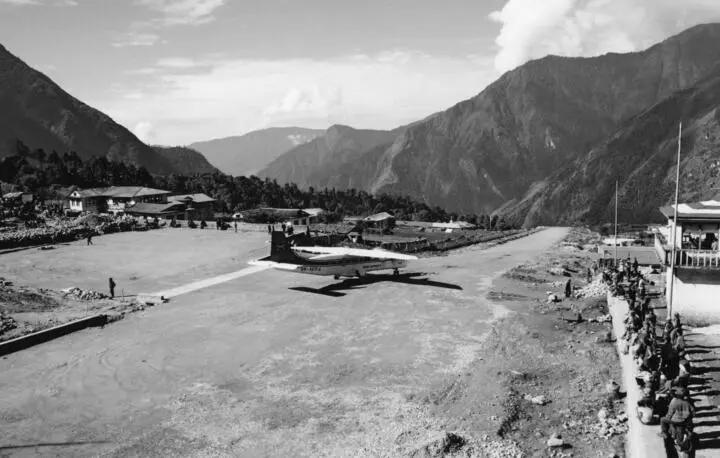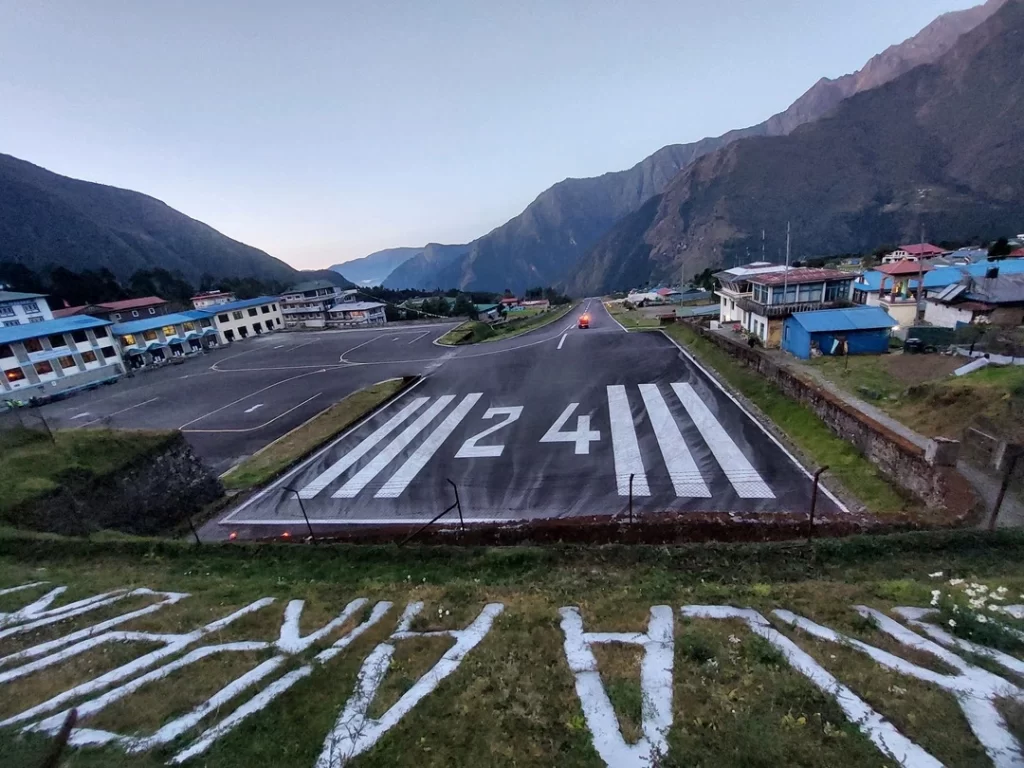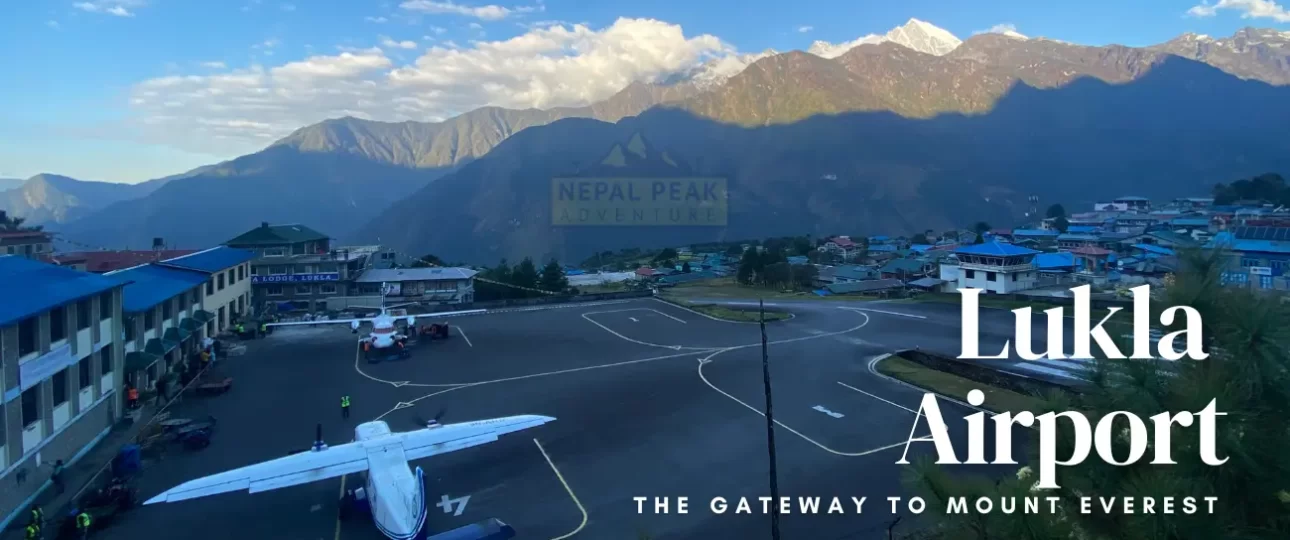Lukla Airport: The Gateway to Mount Everest
Introduction to Lukla Airport
Lukla Airport, officially known as Tenzing-Hillary Airport, is a small yet vital airstrip located in the Khumbu region of northeastern Nepal. It serves as the primary entry point for trekkers and mountaineers heading towards Mount Everest, the highest peak in the world. This blog will delve into the history, operations, challenges, and significance of Lukla Airport, providing a comprehensive overview of this remarkable aviation hub.
History of Lukla Airport
Lukla Airport was constructed in 1964 under the supervision of Sir Edmund Hillary, one of the first two men to summit Mount Everest, and was named Tenzing-Hillary Airport in 2008 in honor of Hillary and his climbing partner Tenzing Norgay. The establishment of the airport was a pivotal moment, facilitating easier access to the Everest region.
Initially, the airport featured a simple, unpaved airstrip. Over the decades, it underwent several upgrades to accommodate increasing tourist traffic. The runway was paved in 2001, significantly improving safety and operational efficiency. Additionally, the airport infrastructure has been enhanced with better terminal facilities, communication systems, and emergency services to support growing aviation demands.

Geographical Location of Lukla Airport
Lukla Airport is situated at an altitude of 2,860 meters (9,383 feet) above sea level, nestled in the Himalayas. The coordinates are 27°41′N 86°43′E, placing it in the Solukhumbu District of Province No. 1 in Nepal. The airport is approximately 138 kilometers (86 miles) northeast of Kathmandu, the capital city of Nepal.
Runway Specifications
The runway at Lukla Airport is 527 meters (1,729 feet) long and 30 meters (98 feet) wide. It has a significant gradient, sloping from 12% at the high end to the low end. This slope assists aircraft in decelerating when landing and accelerating when taking off. The runway is oriented in a northwest-southeast direction, with the northwest end dropping off into a steep, mountainous valley.

Topography and Climate
The airport is surrounded by rugged terrain, with the runway positioned on a hillside. The weather is often unpredictable, with frequent cloud cover, high winds, and sudden changes in visibility. These factors contribute to the airport’s reputation as one of the most challenging in the world. The climate in Lukla is classified as a high-altitude alpine climate, with cold winters and cool summers, and temperatures often dropping below freezing.
Aircraft and Airlines
The airport primarily handles small, fixed-wing aircraft and helicopters. Airlines such as Tara Air, Summit Air, and Sita Air operate regular flights between Lukla and Kathmandu, the capital city of Nepal. The most commonly used aircraft are the DHC-6 Twin Otter and Dornier Do 228, which are well-suited for short takeoff and landing (STOL) operations. Helicopter services are also available for emergency evacuations, cargo transport, and scenic flights.
Flight Procedures
Due to the airport’s unique challenges, pilots require special training to operate in and out of Lukla. Visual flight rules (VFR) are usually followed, meaning that pilots must have clear visual references to navigate and land safely. Flights are often scheduled for the early morning when weather conditions are more stable. The approach and departure procedures involve navigating through narrow valleys and avoiding high peaks, demanding precise control and situational awareness from the pilots.
Safety and Challenges
Difficult Landing and Takeoff Conditions
Lukla Airport’s short runway, steep gradient, and surrounding terrain make both landings and takeoffs extremely challenging. Pilots must approach the runway at a precise angle and speed to ensure a safe landing. Any miscalculation can lead to disastrous consequences. The lack of modern navigational aids and limited visibility further complicate operations.
Weather-Related Issues
The airport is frequently affected by poor weather conditions, including fog, strong winds, and heavy rainfall. These weather patterns can cause significant delays and cancellations, disrupting travel plans for trekkers and climbers. The monsoon season (June to September) often brings extended periods of rain and cloud cover, reducing the number of operable days.
Accidents and Incidents
Lukla Airport has witnessed several accidents over the years, often due to its challenging operational environment. Despite advances in technology and improved safety measures, the risk of accidents remains a concern. Notable incidents include the Yeti Airlines Flight 103 crash in 2008 and the Summit Air crash in 2019, both of which underscored the inherent risks of flying into Lukla.

Lukla: Gateway to Everest
Lukla Airport is the starting point for iconic Everest Base Camp Trek and mostly for the expeditions to Mount Everest. Its strategic location saves trekkers days of arduous trekking from other access points. This convenience has made it an indispensable part of the Everest adventure experience. It significantly reduces the logistical challenges of reaching Everest Base Camp, enabling more climbers and trekkers to attempt their goals.
Economic Impact
The airport has a substantial impact on the local economy. Tourism is a major source of income for the region, providing jobs and business opportunities for residents. Lukla Airport’s role in facilitating tourism cannot be overstated. The influx of visitors supports a wide range of services, including lodging, dining, guiding, and retail, benefiting local businesses and communities.
Cultural and Social Influence
The influx of international visitors has also led to cultural exchanges and increased global awareness of the Sherpa community and their traditions. The airport thus plays a role in preserving and promoting local heritage. Additionally, the exposure to diverse cultures and ideas has fostered greater educational and development opportunities for the local population.
Future Prospects of Lukla Airport
Planned Upgrades and Improvements
There are ongoing discussions about further enhancing the safety and capacity of Lukla Airport. Potential improvements include better navigation aids, more robust weather monitoring systems, and runway extensions. Upgrading the air traffic control facilities and implementing advanced communication technologies could also improve operational safety and efficiency.
Balancing Tourism and Sustainability
As tourism grows, there is a pressing need to balance development with environmental conservation. Sustainable practices are being encouraged to ensure that the region’s natural beauty and ecological integrity are preserved for future generations. Initiatives such as waste management programs, eco-friendly trekking policies, and community-based tourism models aim to minimize the environmental footprint of tourism.
Conclusion
Lukla Airport is more than just an airstrip; it is a lifeline for the Everest region, providing essential connectivity and supporting the local economy. Despite its challenges, it remains a crucial gateway for adventurers seeking to conquer the world’s highest peak. Understanding its history, operations, and significance helps appreciate the vital role it plays in the world of high-altitude aviation and mountaineering.
Lukla Airport FAQs
Why is Lukla Airport famous?
Lukla Airport is renowned for its challenging operating conditions due to its short runway, steep gradient, and the surrounding mountainous terrain. It is often considered one of the most dangerous airports in the world.
When was Lukla Airport built?
Lukla Airport was constructed in 1964 under the supervision of Sir Edmund Hillary. The runway was paved in 2001 to improve safety and efficiency.
How long is the runway at Lukla Airport?
The runway at Lukla Airport is 527 meters (1,729 feet) long and 30 meters (98 feet) wide, with a significant slope to assist in landing and takeoff.
What type of aircraft operates at Lukla Airport?
Lukla Airport primarily handles small, fixed-wing aircraft such as the DHC-6 Twin Otter and Dornier Do 228, as well as helicopters. These aircraft are suitable for short takeoff and landing operations.
What are the operating conditions at Lukla Airport?
The airport operates under visual flight rules (VFR), meaning flights depend on clear weather and visibility. Pilots require special training to navigate the challenging approach and departure procedures.
How can I reach Lukla Airport?
Flights to Lukla Airport typically depart from domestic terminal of Tribhuvan International Airport in Kathmandu, Nepal or from Manthali airport at Ramechhap. The flight duration is about 30 to 40 minutes, depending on weather conditions.
What are the safety concerns at Lukla Airport?
Lukla Airport faces several safety challenges, including its short runway, steep gradient, and unpredictable weather conditions. These factors have contributed to several accidents over the years.
Are there any alternative routes to Lukla?
While flying to Lukla is the most common and convenient option, trekkers can also reach Lukla by taking a bus from Kathmandu to Jiri and then trekking for several days to reach the airport. This route, however, is much longer and more physically demanding.
What is the best time to fly to Lukla?
The best time to fly to Lukla is during the pre-monsoon (March to May) and post-monsoon (September to November) seasons when the weather is generally more stable. Early morning flights are preferred as weather conditions tend to be more favorable.
How do weather conditions affect flights to Lukla?
Weather conditions significantly impact flights to and from Lukla Airport. Fog, high winds, and cloud cover can cause delays or cancellations. It’s advisable to allow extra days in your travel itinerary to accommodate potential disruptions.
What amenities are available at Lukla Airport?
Lukla Airport has basic amenities, including a small terminal building with limited seating, a café, and restrooms. The airport’s primary focus is on functionality and safety rather than extensive passenger comforts.
Can I book flights to Lukla in advance?
Yes, flights to Lukla can be booked in advance through various airlines operating in Nepal. However, due to the airport’s popularity and limited capacity, it’s recommended to book early, especially during peak trekking seasons.
Is Lukla Airport accessible year-round?
Lukla Airport is technically accessible year-round, but flights are more frequent and reliable during the pre-monsoon and post-monsoon seasons. The monsoon season (June to September) often brings heavy rains and reduced visibility, leading to more flight cancellations.
What should I do if my flight to Lukla is canceled?
If your flight to Lukla is canceled due to weather or other factors, you can work with your airline or trekking agency to reschedule. Be prepared for potential delays and have a flexible itinerary to accommodate changes.
Are there medical facilities at Lukla Airport?
While Lukla Airport itself does not have extensive medical facilities, the nearby village of Lukla has a small clinic that can provide basic medical services. For serious medical emergencies, helicopter evacuations to Kathmandu are available.




1 Comment
Loved the flight into Lukla, Lukla and all the villages on the EBC treck